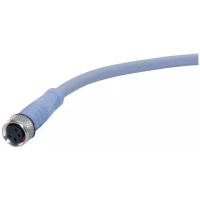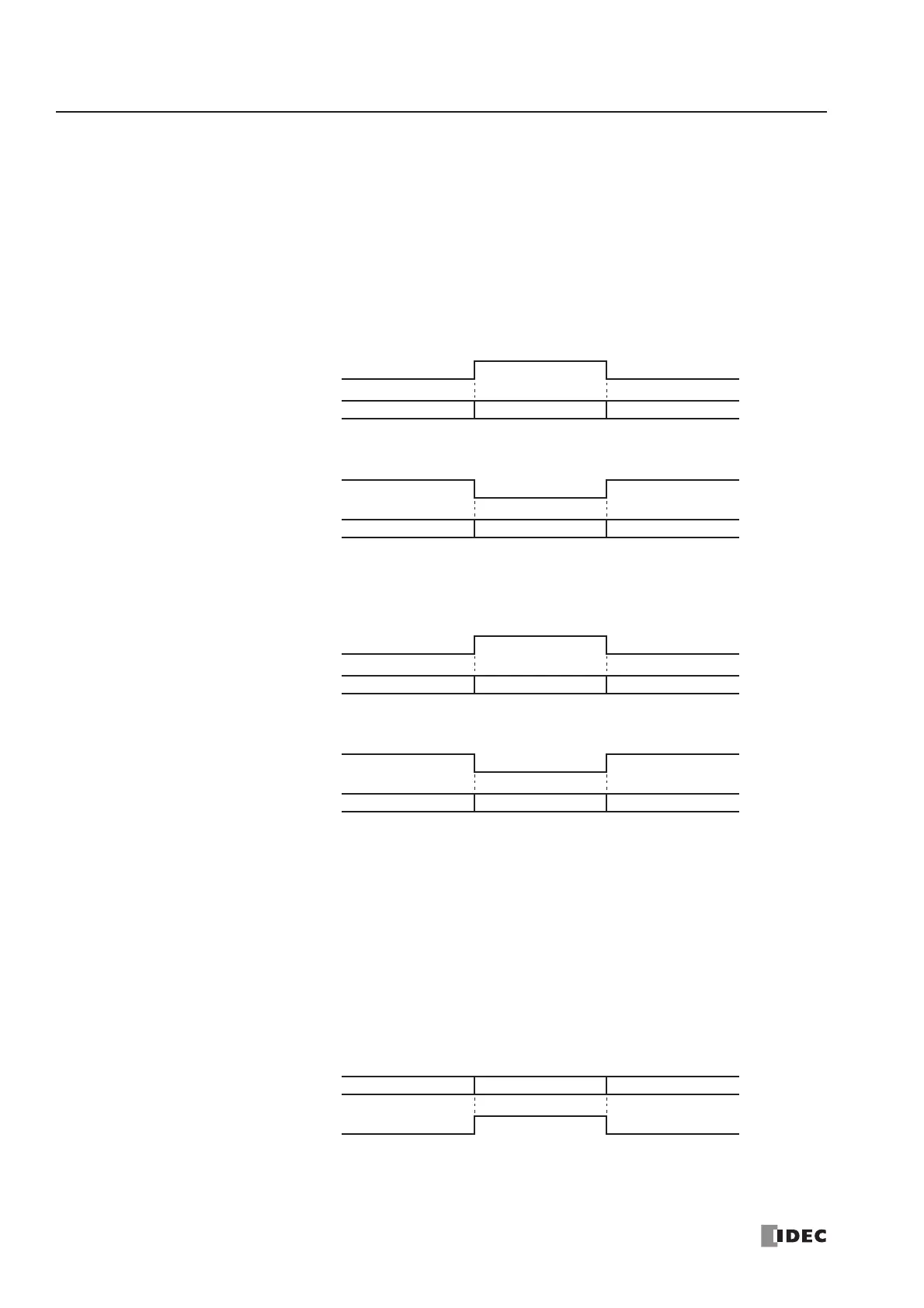17: USER COMMUNICATION INSTRUCTIONS
17-30 « FC4A MICROSMART USER’S MANUAL »
DSR Input Control Signal Option D8105
Special data register D8105 is used to control data flow between the MicroSmart RS232C port 2 and the remote terminal
depending on the DSR (data set ready) signal sent from the remote terminal. The DSR signal is an input to the MicroSmart
to determine the status of the remote terminal. The remote terminal informs the MicroSmart
using DSR whether the
remote terminal is ready for receiving data or is sending valid data.
The DSR control signal option can be used only for the user communication through the RS232C port 2.
D8105 = 0 (system default):
DSR is not used for data flow control. When DSR control is not needed, set 0 to D8105.
D8105 = 1: When DSR is on, the MicroSmart can transmit and receive data.
D8105 = 2: When DSR is off, the
MicroSmart can transmit and receive data.
D8105 = 3: When DSR is on, the MicroSmart can transmit data. This function is usually called “Busy Control”
and is used for controlling transmission to a remote terminal with a slow processing speed, such as a
printer. When the remote terminal is busy, data input to the remote terminal is restricted.
D8105 = 4: When DSR is off, the MicroSmart can transmit data.
D8105 = 5 or more: Same as D8105 = 0. DSR is not used for data flow control.
DTR Output Control Signal Option D8106
Special data register D8106 is used to control the DTR (data terminal ready) signal to indicate the MicroSmart operating
status or transmitting/receiving status.
The DTR control signal option can be used only for the user communication through the RS232C port 2.
D8106 = 0 (system default):
While the MicroSmart is running, DTR is on whether the MicroSmart is transmitting or receiving
data. While the MicroSmart is stopped, DTR remains off. Use this option to indicate the MicroSmart
operating status.

